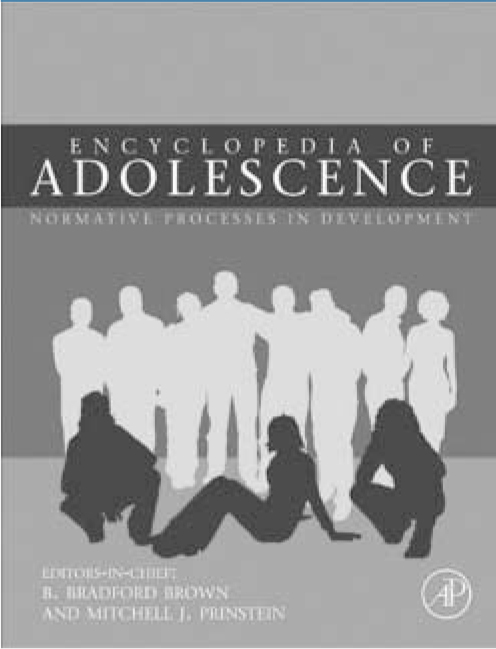
Almost everything we know about adolescence has come from research conducted during the past quarter of a century. This volume, the first of three, is a distillation of quality research, presented in an engaging style, with extensive cross-referencing, impressive breadth and not a hint of dumbing-down. This volume presents alphabetically organised articles from psychiatry, psychology, biology, history, sociology, public policy expertise, education, geography, literature and anthropology. Within all of these disciplines, there are many definitions of adolescence, yet a characteristic element is that adolescence is a transition whose purpose is equipping children for adulthood.
The point of these narratives is to bring to our attention such diverse topics as child prodigies and how to teach them; neuroplasticity and a more detailed understanding of the selective elimination of brain cells and connections adolescents use least, based on their experiences; and the evolutionary function of music. Unwilling to play down the evolutionary advantages of many facets of adolescence our profession would sometimes seek to pathologise, these encyclopedic entries are deftly edited, ever careful to draw the reader's attention to related material in other entries, broadening and extending our collective understanding, There are some surprises; for instance, I was not expecting to learn that the evidence for the benefits of high self-esteem is very weak.
If I had to choose one chapter for you to dip into, to be convinced of this work's quality, it would be the chapter on creativity in adolescence. In this chapter, the four strands of adolescent creativity – personal dimension, creative process, creative product and environment – can be seen as leitmotifs for the rest of this volume. Similarly, the entries on why adolescents develop motivational systems and studies on risk-taking shed a different shade of light on near every aspect of social and psychological development.
If the old adage that it takes a village to raise a child is true, then it must be truer still that it takes a global community of interdisciplinary experts to explain adolescence. If you truly want to really know how social and cultural life shapes adolescent neurobiology, it's all in these pages. With so many international cross-disciplinary contributors, this could have been a patchwork ragbag of a book about adolescence. But it isn't. This is a gallery of unique and brilliantly rendered portraits of today and tomorrow's adolescents, curated with flair and aplomb.



eLetters
No eLetters have been published for this article.